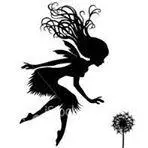בתקופה האחרונה קראתי לא מעט ספרי פנטזיה יהודית. קראתי את "מסכת תהום" שזכה בפרס ספיר, "ניצוצות" המעולה, והספר האחרון שקראתי, "חרשתא", הצליח להתעלות על כל הציפיות, ובפער.
"חרשתא" הוא רומן פנטזיה מודרני שמושך את הקורא פנימה אל תוך עולמות נסתרים מתוך המסורת היהודית המיסטית. מצד אחד הוא סוחף, הרפתקני, פרוע במידה, מלא קרבות מאגיים, שמות קדושים, דיבוקים וליליות. מצד שני, הוא מצליח להישאר גם רפלקטיבי, ולעסוק ברצינות בשאלות של שליטה, מוסר, כוחות עתיקים וגבולות הידע האנושי. שילוב שלא רואים כל יום, בטח לא בעברית.
העלילה עוקבת אחרי אופיר, בת שירות לאומי, שנקלעת שלא בטובתה לעולם שדים סוער במיוחד. אחרי שהיא גונבת , לטובת קשישה מסתורית , מגילה עתיקה ממרתפי הספרייה הלאומית, היא מגלה שמדובר לא סתם באיזה קלף מתפורר אלא ב"חותם שלמה". זהו טקסט שמכיל את הכוח לכבול שדים. אלא שיחד עם המגילה היא מקבלת גם את היכולת המפוקפקת לשלוט בשדים בעצמה. או במילים אחרות: אופיר הופכת לחרשתא , מכשפה. והיא צריכה ללמוד מהר מאוד איך לשרוד בעולם שבו לילית היא דמות אמיתית לגמרי, אשמדאי מת, ושדים יוצאים למרד גלוי בישראל של היום.
אופיר לא יודעת כלום על העולם הזה, וזה דווקא חלק מהקסם. היא לומדת תוך כדי תנועה , בין קערות השבעה, לחשים, טקסים בשירותים של תחנת דלק, וקרבות אוויריים עם צלחות לוויין. היא נשלחת לחיפה, ממשיכה לצפת, פוגשת בדרך שדים, ציידים, בעלי שם, וגם את דניאל , בן למשפחה של מקובלים ולוחם לשעבר , שמהווה לה מעין אנטי-גיבור משלים. הוא חילוני, פוסט-טראומטי, ספק שותף ספק יריב, ומהר מאוד גם הרבה מעבר לזה.
מה שמרשים במיוחד בכתיבה של קגן הוא העומק התרבותי. השדים בספר לא לקוחים מאיזו פנטזיה כללית, אלא שייכים באופן מובהק למסורת היהודית. אשמדאי, הורמיז, לילית, רזזום , כולם מופיעים בטקסטים קבליים, תלמודיים, או בפולקלור יהודי עתיק. הקשר לעולם הזה לא נשאר בגדר אזכור: הוא חלק בלתי נפרד מהעלילה, מהשפה, מהמנגנונים העלילתיים. הם מדברים ארמית, מצטטים פסוקים, ויש להם ביוגרפיות מורכבות ומטען תרבותי אמיתי. לא קלישאה. לא קריקטורה.
אחד הרובדים שהכי תפס אותי בקריאה היה המאבק על הידע , בעיקר הידע המיסטי. מי שולט בו, מי רשאי להשתמש בו, והאם אפשר בכלל להחזיר אותו לידיים אחרות. קגן לוקחת את עולם הקבלה, שהיה לאורך ההיסטוריה רכוש כמעט בלעדי של גברים, ומעבירה אותו לידיים של בת שירות אחת עם הרבה אידיאלים, אומץ לב, וסבתא מסתורית עם שיטות חינוך שניתן להגדיר לכל הפחות "שנויות במחלוקת". דרך השדים, הליליות והלחש, היא מצליחה לספר סיפור שהוא לא רק פנטזיה, אלא גם תהליך של גיבוש זהות נשית-רוחנית בתוך מסורת שנכתבה כמעט כולה בלשון זכר.
המסע של אופיר פיזי לגמרי , היא נוסעת בתחב"צ, מסתתרת, קופצת בין ערים , אבל גם מסע מיסטי במובן העמוק. הספר נע במרחב גאוגרפי מוכר (ירושלים, חיפה, צפת, ים המלח) והופך אותו לבמה לאירועים קבליים. התחושה היא שהעל-טבעי לא נמצא "מעבר" , הוא נמצא כאן, ליד, סמוך, מוסתר רק בשכבת תפיסה אחת. תחושת הגלות והגאולה, שהיא מוטיב מרכזי בספרות הקבלית, נוכחת לאורך כל הדרך , אבל לא מדובר בגלות לאומית אלא בגלות של ידע, של זהות, של סוד שהלך לאיבוד וצריך להיגאל.
גם הסגנון של קגן עובד טוב מאוד , היא נעה בטבעיות בין שפה עכשווית, יומיומית, לבין טקסטים בארמית ולחשים שמבוססים על מקורות אמיתיים או משועתקים באופן משכנע. התוצאה היא קול ייחודי שמצליח להישאר נגיש, אינטליגנטי, ומעורר חיבה , גם כשהשדים על המסך מנסים לחסל את החשמל במדינה.
אף ש"ניצוצות" עוסק ברעיונות אחרים , תיקון, שבירת כלים, חיפוש אחר אור , ו"חרשתא" שואב אל מקומות של מאגיה אפלה ודיבוקים, הם שניהם משתייכים לגל מרתק של פנטזיה יהודית עכשווית שמדברת בשפה פנימית, לא מתנצלת, וחיה בשלום עם הסודות והסתירות של המסורת. בעיניי, זו אחת ההתפתחויות הספרותיות הכי חשובות שקרו פה לאחרונה.
המלצה שלי? רוצו לקרוא (או לשמוע), תתאהבו בשדים, תכתבו קערת השבעה ליד הקפה של הבוקר, ותיזהרו ממבטים חשודים של חתולות שחורות. דוז פואה, חרשתא. דוז פואה.
חרשתא/ יהודית קגן
הוצאת שתים, 2024, 360 עמ'
דירוג SIVI –
איכות אודיו –

In recent months, I’ve been diving into contemporary Jewish fantasy, Masekhet Tehom (winner of the Sapir Prize), the excellent Nitzotzot, and, most recently, Charashta. Of the three, Charashta surprised me the most. It exceeded my expectations by a wide margin.
This novel blends fast-paced adventure with rich Jewish mysticism. Judith Kagan draws the reader into a world where demons, sacred texts, and forgotten magical traditions coexist with buses, national service volunteers, and gas station bathrooms. Charashta is, at once, thrilling and thoughtful. It is a fantasy with depth, heart, and intelligence.
The story follows Ofir, a young Israeli doing her national service at the National Library in Jerusalem. After stealing an ancient scroll known as the legendary "Seal of Solomon" on behalf of a mysterious elderly woman, she discovers that it grants her the power to control demons. Suddenly, Ofir, naive, devout, and completely unprepared,is thrust into a supernatural conflict involving rebel demons, holy names, magical incantations, and a centuries-old war between the worlds of humans and spirits.
A journey across Israel follows: from Jerusalem to Haifa, to Tzfat, and back again, as Ofir learns, clumsily but determinedly, to wield her power as a charashta (Aramaic for “sorceress”). Along the way, she teams up with Daniel, a secular ex-soldier and reluctant demon hunter from a lineage of Kabbalistic sages. Their dynamic, part tension, part reluctant camaraderie, is a refreshing counterpoint to the chaos surrounding them.
One of the book’s strongest elements is its use of authentic Jewish sources. Kagan doesn’t rely on generic fantasy tropes. Instead, she draws directly from Jewish folklore, Talmudic legends, and Kabbalistic texts. Lilith, Ashmedai, Hormizd, and other demonic figures aren’t borrowed symbols; they’re given voice, depth, language (yes, Aramaic), and intention. The result is a rich mythological world that feels both rooted and imaginative.
Beyond the action, Charashta asks more profound questions: Who controls mystical knowledge? Who is allowed to wield it? And what happens when someone outside the traditional hierarchy—in this case, a young religious woman—gains access to it? Ofir’s journey is not just physical, but also spiritual and ideological. It’s a reclamation of power in a tradition historically dominated by men, a story of mystical identity shaped by rebellion, intuition, and unlikely mentorship.
The novel’s Israeli setting is more than a backdrop; it’s integral. The supernatural unfolds in familiar locations: a care home in Haifa, the streets of Tzfat, an ancient spring in Ein Gedi. Kagan masterfully turns everyday geography into enchanted battlegrounds, reminding us that the magical and the mundane are often only one perception apart.
Stylistically, Kagan’s writing is fluid and engaging. She moves seamlessly between modern Hebrew and ancient formulations, creating a grounded and otherworldly narrative. Even as chaos erupts and demons dismantle the power grid, the tone remains witty, humane, and accessible.
While Nitzotzot explores Lurianic ideas of repair and divine light, and Charashta deals more in dybbuks and forbidden knowledge, both novels are part of a compelling new wave in Hebrew fantasy: unapologetically Jewish, richly imaginative, and emotionally resonant.
Bottom line? Charashta is smart, funny, atmospheric, and utterly original. A must-read for fans of Jewish folklore, urban fantasy, or anyone curious to see what happens when a national service volunteer armed with a holy text, a box of markers, and a lot of chutzpah takes on the underworld and wins.
Douze points to Judith Kagan. I hope we get more Charashtot in the future.
לגלות עוד מהאתר Sivi's Books
Subscribe to get the latest posts sent to your email.

